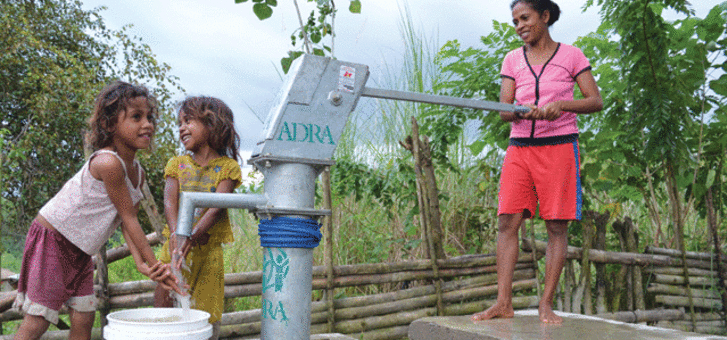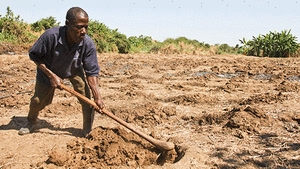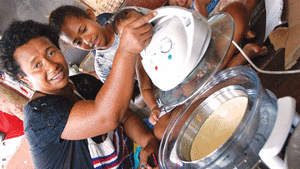A clean and accessible water supply can make a huge improvement in the lives of people. Braden Blyde tells how it affected one community.
One simple indicator of poverty is the distance a person has to walk to collect potable water. The farther you have to walk, the more likely you are to be facing a broad range of issues associated with poverty: difficulty accessing education, reduced food sources, lower household income and fewer opportunities to develop as a community.
Ask yourself, How far do I have to walk for my water? A metre, six or seven, down the hall? It’s rarely more than that unless your house is a mansion. In Asia and Africa, the average distance for women and children—those most likely to be responsible for collecting water—is six kilometres.
Imagine having to complete a sweaty, six-kilometre journey twice a day, carrying a heavy pot, just to collect water—and knowing the whole time that the water you collect will possibly make you sick.
For close to a billion people in the developing world, this is a daily reality. Take East Timor, which is part of the Indonesian archipelago. Torn apart in recent years by civil war, East Timor is struggling to rebuild. Even today, after decades of work, communities across the country are trapped in poverty on a par with the worst in the world.
|
ADRA has taught residents in East Timor how to |
The more than 1000 residents of Uma Tolu, a small, rural village, would walk up to three kilometres to collect water from a shallow well with e-coli levels described as “too numerous to count.” Diarrhoea, scabies and other water-borne diseases were rife.
“My children would get diarrhoea at least twice a month,” says Josienta, a mother of five. “The water would also make them cough.” In some cases, this childhood cough will develop into deadly tuberculosis in adulthood. Children were forced out of school as a result of both illness and the time and energy it took to collect water. For a nation that had already been brought to its knees by civil war, the lack of potable water only slowed its development.
The long walk also took its toll on Josienta, who had to toil long and hard to produce enough food to feed her family. “I spent one hour twice a day collecting water, and I would get very tired from the weight of the water pot and the heat from the sun.” The walk, while necessary, robbed her of time and energy that could have been devoted to improving her family’s nutrition and income.
|
Hygiene training ensures that ADRA’s project |
Such is the importance of clean water. Without it, illness and death are common; dreams and hopes are put on hold. But the simple act of providing opportunities for communities like Josienta’s to access clean water close to their homes brings improved nutrition, income and education—the foundations of life and hope.
With assistance and training by the Adventist Development and Relief Agency (ADRA), residents learned how to build and maintain water pumps. The community has established 12 water points, all strategically placed to bring clean water close to Uma Tolu’s 180 households. Josienta now only has to walk just 25 metres to access water for her family!
ADRA has also provided health and sanitation training for women’s groups and the local schools, ensuring that the organisation not only provides water but also brings life-changing behaviour modification.
The water has brought Josienta and the rest of her community health, improved incomes and food sources, and better education for her children.
ADRA is doing its small part to help a land and people once ravaged by civil war to rebuild and discover hope.





